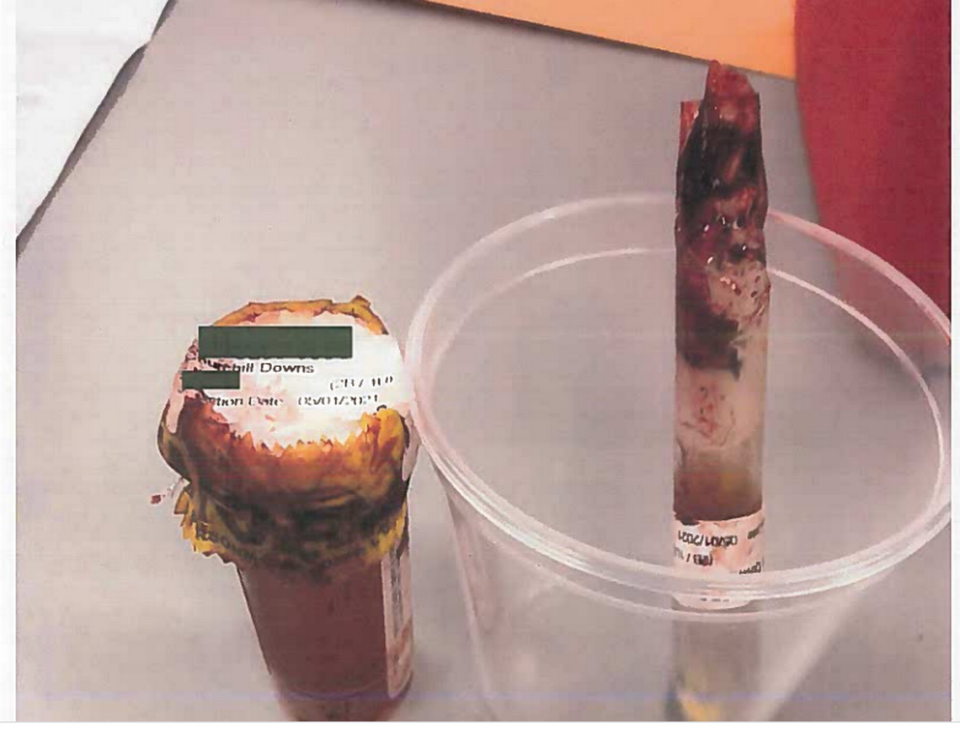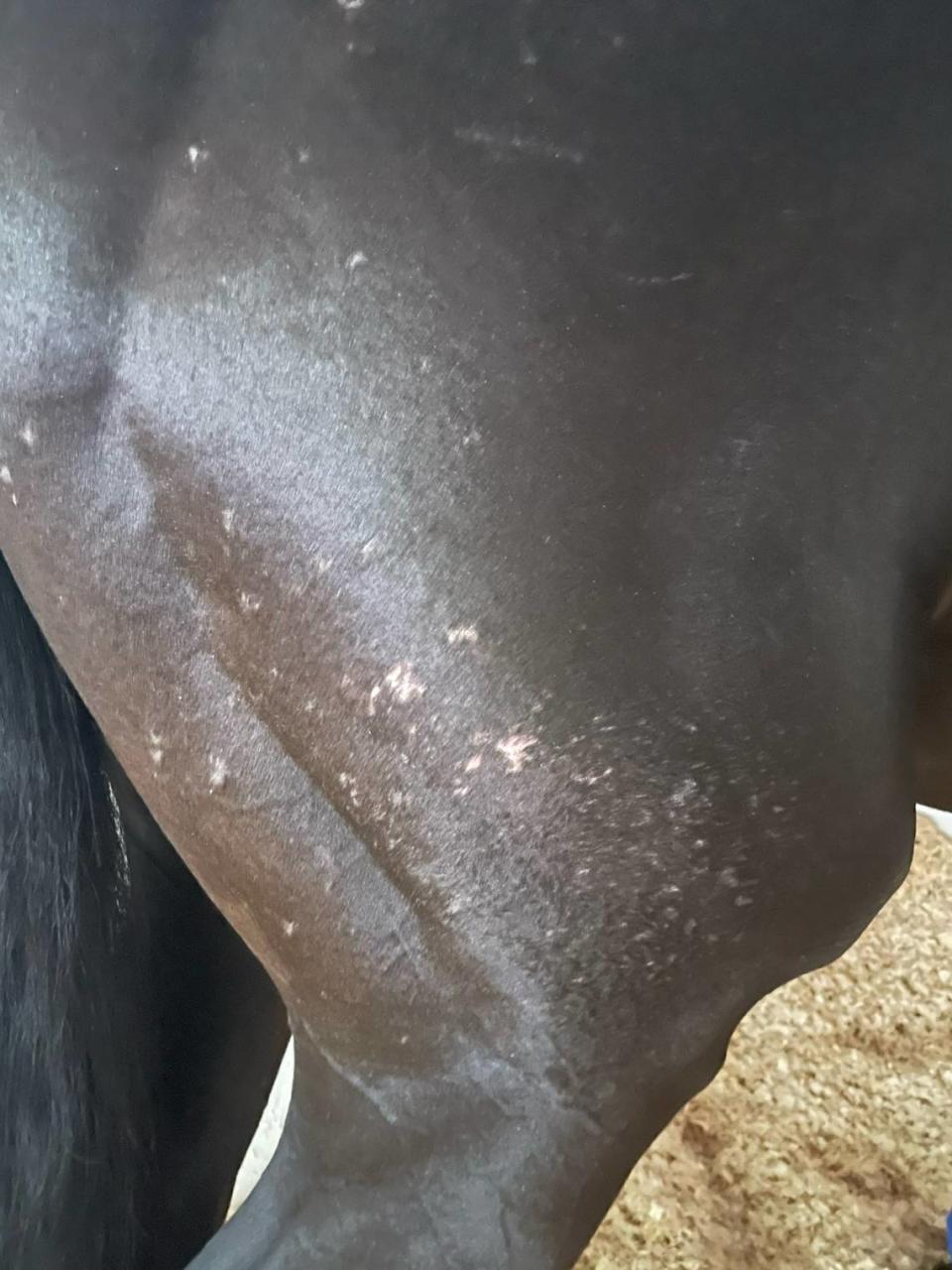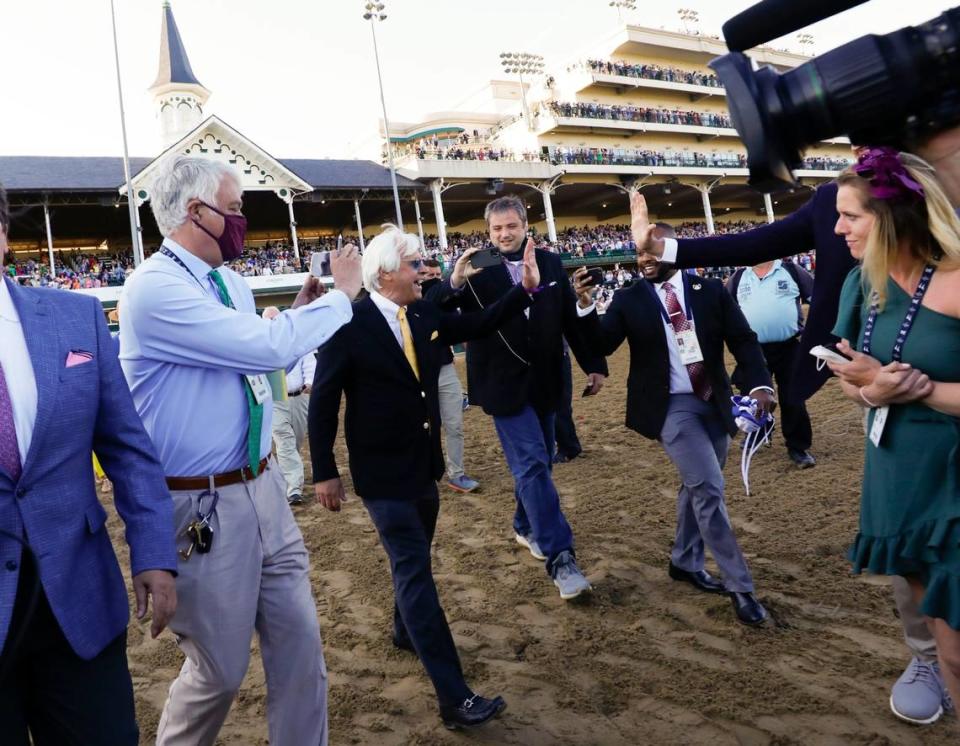Here’s what the Kentucky Derby has come to: Fighting over drops of horse pee
- Oops!Something went wrong.Please try again later.
The result of the 2021 Kentucky Derby, the first jewel of Thoroughbred racing’s Triple Crown, might come down to exactly how much Medina Spirit’s urine Bob Baffert’s attorneys can get their hands on.
They want all 25 or so milliliters of it, which the state argued is excessive.
Franklin Circuit Court Judge Thomas D. Wingate spelled out why Friday he was forgoing his breakfast to hear the request for an injunction to force Kentucky to comply.
“This is a case of very high importance to the state of Kentucky and you each need to try to work it out if you care anything about horse racing in the state, which everybody does,” Wingate said.
“This hasn’t happened since 1968,” a reference to the Dancer’s Image disqualification over a then-banned drug, he said. “This is somewhat of a black eye on the industry.”
The Kentucky Horse Racing Commission, which has yet to decide to strip Medina Spirit of the colt’s $1.68 million purse and trainer Baffert of his record seventh win, wants to keep some of the urine sample for a rainy day, so to speak.
That is because they’ve already had a mishap with at least one blood sample, which apparently broke in transit somehow.

So attorneys for Baffert, for horse owner Amr Zedan and for the racing commission went in front of Wingate to make their respective cases: How much horse pee is enough?
Because 25 (or possibly 27, the state wasn’t completely sure) milliliters of frozen horse pee is not a lot.
Think of the cap on the bottle of cough medicine you probably have in your bathroom. It holds 30 milliliters.
So Baffert’s case is riding on not even that much frozen urine. And it is crucial, Baffert attorney Craig Robertson told Wingate, that it all stays frozen until it gets to the lab (which apparently is in New York. Long story, don’t ask.)
“Why do you want it all? … I don’t think that’s fair,” Wingate quizzed Robertson.
Baffert’s attorney said the lab will need to test for a variety of substances that are in Otomax, the ointment that Baffert says was used on Medina Spirit leading up to the Kentucky Derby to treat a skin condition.

Baffert, who joined the hearing via Zoom, hopes to prove that the corticosteroid, found in Medina Spirit at a level of 21 picograms per milliliter of blood on the first test and then at 25 picograms per milliliter of blood on the second test, was not given as a joint injection.
He hopes that will count as “mitigating circumstances,” and give the stewards and the racing commission enough wiggle room not to disqualify Medina Spirit.

Wingate waded right into that thorny issue: Does that matter?
Because it isn’t clear that the method of administration does.
Wingate pointed out to a previous case involving trainer Graham Motion, one that Wingate actually was overturned on. Motion’s horse Kitten’s Point won a 2015 race at Keeneland then tested over the race-day threshold for a drug of the same class of medication as the drug in the Baffert/Medina Spirit case.
Motion (and, coincidentally, Robertson, who was also his attorney) won in Wingate’s court but after a five-year legal battle lost in the Kentucky Court of Appeals, which ultimately said, among other things, that it didn’t matter that the level of the drug would have had no impact on the race.
Jennifer Wolsing, the racing commission’s attorney, said Friday that the commission isn’t taking any position on that for now. They were there solely to settle the question of how much urine Baffert can have: Something north of 2 milliliters but south of all 27.
Wingate said he would issue a ruling Wednesday unless they come to an agreement, hinting that he was leaning toward giving Baffert most of it.
At one point, Wingate suggested that, rather than trust shippers again, KHRC executive director Marc Guilfoil and a Baffert representative drive the frozen sample to New York, “have a nice dinner at Tavern on the Green,” and then drive the remainder back to Kentucky.
Asked for his thoughts, Guilfoil told the judge, “I guess I’m going up north.”
Wingate asked the commission what they were going to do with the urine, since the results might be irrelevant.
“Why do you want to keep the urine, just for the Smithsonian or something?” Wingate asked. ”Does it matter if it’s an ointment or an injectible ... for the purposes of finding out if you’re going to take his gold trophy away?”
Lawsuit: Baffert, Medina Spirit owner demand Kentucky Derby winner’s urine be tested
Churchill Downs suspends Baffert for two years after Kentucky Derby drug test confirmed
How does the 2021 Kentucky Derby drug scandal compare to Dancer’s Image in 1968?

